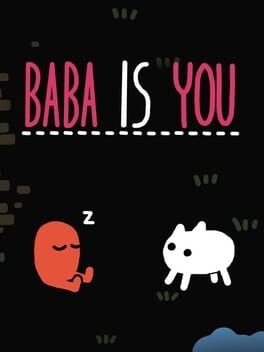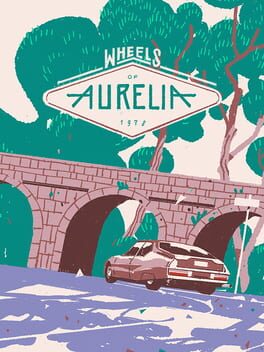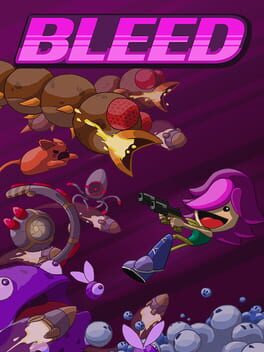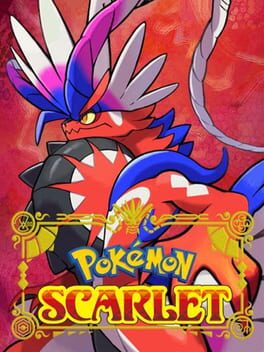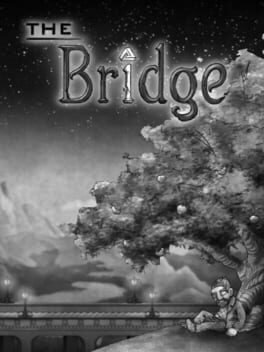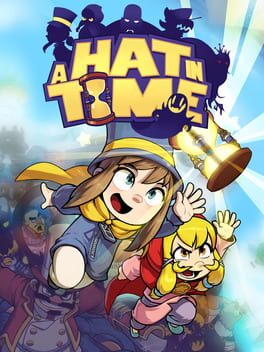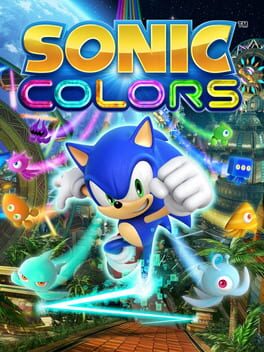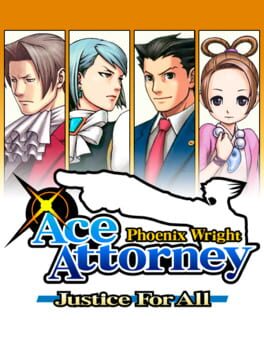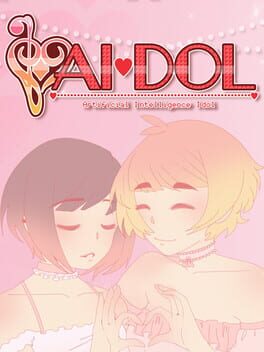Grammarhead
2015
2021
An interactive narrative game where your only dialogue options are saying 'no' or saying nothing at all. It's quirky and fun for a couple of hours, but after beating it I really struggled to find some of the remaining routes in each episode. It doesn't help that you only get 3 save states, across all the episodes. I couldn't even find the presidential storyline in episode 3, which I think was meant to be the main branch of the story. It's impressive how many branching paths they hid in such a simple dialogue system, but some of them are a little TOO well hidden.
2019
2016
2012
2022
Some of the wild Pokémon in this game are so small you actually can't see them. I keep tripping over tiny Pokémon and getting dragged into battles I don't want to fight. It sucks. The game's ugly and the battles are slow and it's honestly a downgrade from Legends: Arceus in every way. And yet, it must be doing something right, because I've played for 150+ hours and I paid for the DLC. Is this what Stockholm syndrome feels like?
2013
The speed at which the player character moves and the stages rotate are very slow - a problem I think could've been fixed with a fast-forward feature. The game's only 3-4 hours long, but I had to split those hours over five non-consecutive days because it didn't hold my attention. The puzzles are visually mesmerising - I adore the art style - but the game is more satisfying to look at than it is to play.
2021
After Metroid Dread was announced, I figured now was a perfect time to try this series for the first time. I played through Super Metroid and Metroid Fusion before buying Dread on release day. I can safely say that Metroid Dread is my favourite of the three.
I know many of these were introduced earlier in Samus Returns, but the quality-of-life improvements here are lifesavers. The ability to aim in any direction, far simpler controls for abilities like the wall jump and space jump, map markers, a more robust map in general, more generous respawn points for bosses and the like - they addressed so many little problems I had with the earlier titles. Not to mention the satisfying melee counter, which adds much-appreciated spice to regular enemy encounters and boss battles alike.
I'm a little mixed on the E.M.M.I. sections, where you run from these mechanical sentries that are hunting you down. On one hand, I love how the addition of a complex enemy AI allows for endless potential scenarios, giving every player a different, unique horror story to tell based on their encounters with the EMMIs. Early on you unlock a limited stealth ability, which leads to some nail-bitingly tense close-call escapes. On the other hand, these sections can get frustrating. They often involve a lot of waiting around for the EMMI to leave, testing my patience more than anything else. Sometimes I would die in one section repeatedly, finding myself less terrified by the EMMIs and more annoyed that they won't let me progress.
Backtracking for items can be frustrating at times, because the game likes to railroad you every now and then, preventing you from exploring for no discernible reason. It's not as bad in this game as it was in Fusion, though, and it's a relief to not have Adam spell out your next objective for you every five minutes. In that sense, progressing through each area feels like exploration on its own, even though you're walking a more-or-less predetermined path.
The bosses are the best in the series. At least, out of the games I've played. They always took me several attempts
to learn their patterns and find opportunities to counterattack, but the process of doing so was always satisfying. Some of these bastards are hard to beat, too - they really make you earn your victories. Unlike the other two Metroid games I played, I never had to consult a guide to beat a boss. And like I mentioned earlier, you always respawn right before the boss fight, so dying to a boss feels a lot less frustrating now. A couple of the minibosses get reused a tad too often, though.
I collected every item in the game - 100% completion. I've never done this in any other Metroid game. And thus I think I've earned the right to say: screw the Shinespark puzzles. The strict timing and intricate knowledge of the Shinespark's mechanics that are required to get some of these item pickups singlehandedly makes getting 100% completion 100% harder. If you don't like the Shinespark, maybe think twice about 100%. Go for a fast completion time instead.
As a couple of asides, I thought the soundtrack was forgettable. I literally can't recall a single area's music, and I finished my 15-hour playthrough of the game two days ago. And the ending is the coolest shit since Super Metroid's ending. In a way, Dread's ending has been a long time coming for the series.
Like I said, this game is my favourite in the series, as a newcomer who thought Super Metroid had some obtuse controls and Fusion felt like a guided tour. Dread has its own set of flaws, but I find them easier to overlook. To any Metroid fan, or just anyone looking for a fun, challenging action-platformer to play, Metroid Dread is an easy recommendation.
I know many of these were introduced earlier in Samus Returns, but the quality-of-life improvements here are lifesavers. The ability to aim in any direction, far simpler controls for abilities like the wall jump and space jump, map markers, a more robust map in general, more generous respawn points for bosses and the like - they addressed so many little problems I had with the earlier titles. Not to mention the satisfying melee counter, which adds much-appreciated spice to regular enemy encounters and boss battles alike.
I'm a little mixed on the E.M.M.I. sections, where you run from these mechanical sentries that are hunting you down. On one hand, I love how the addition of a complex enemy AI allows for endless potential scenarios, giving every player a different, unique horror story to tell based on their encounters with the EMMIs. Early on you unlock a limited stealth ability, which leads to some nail-bitingly tense close-call escapes. On the other hand, these sections can get frustrating. They often involve a lot of waiting around for the EMMI to leave, testing my patience more than anything else. Sometimes I would die in one section repeatedly, finding myself less terrified by the EMMIs and more annoyed that they won't let me progress.
Backtracking for items can be frustrating at times, because the game likes to railroad you every now and then, preventing you from exploring for no discernible reason. It's not as bad in this game as it was in Fusion, though, and it's a relief to not have Adam spell out your next objective for you every five minutes. In that sense, progressing through each area feels like exploration on its own, even though you're walking a more-or-less predetermined path.
The bosses are the best in the series. At least, out of the games I've played. They always took me several attempts
to learn their patterns and find opportunities to counterattack, but the process of doing so was always satisfying. Some of these bastards are hard to beat, too - they really make you earn your victories. Unlike the other two Metroid games I played, I never had to consult a guide to beat a boss. And like I mentioned earlier, you always respawn right before the boss fight, so dying to a boss feels a lot less frustrating now. A couple of the minibosses get reused a tad too often, though.
I collected every item in the game - 100% completion. I've never done this in any other Metroid game. And thus I think I've earned the right to say: screw the Shinespark puzzles. The strict timing and intricate knowledge of the Shinespark's mechanics that are required to get some of these item pickups singlehandedly makes getting 100% completion 100% harder. If you don't like the Shinespark, maybe think twice about 100%. Go for a fast completion time instead.
As a couple of asides, I thought the soundtrack was forgettable. I literally can't recall a single area's music, and I finished my 15-hour playthrough of the game two days ago. And the ending is the coolest shit since Super Metroid's ending. In a way, Dread's ending has been a long time coming for the series.
Like I said, this game is my favourite in the series, as a newcomer who thought Super Metroid had some obtuse controls and Fusion felt like a guided tour. Dread has its own set of flaws, but I find them easier to overlook. To any Metroid fan, or just anyone looking for a fun, challenging action-platformer to play, Metroid Dread is an easy recommendation.
2019
2013
2017
2010
I used to think this game was overrated. When I first played it maybe six months or so after it came out, I thought it paled in comparison to the DS version I had already played prior. It felt like a pretty standard 2D platformer with controls designed for a 3D speed-heavy Sonic game. So many level design decisions baffled me, and I could never get the hang of Sonic's weird, inconsistent jump. I beat the game at least twice, but I never went out of my way to get S ranks or collect the red rings because I didn't enjoy the game that much. It wasn't bad, it just wasn't my cup of tea.
I went back to it after many years to see if my opinions had changed at all. And at first, that didn't seem to be the case. Tropical Resort is an uninspired level when you go through it for the first time. But one thing I did differently in this playthrough, wondering if it would change my mind at all, was revisiting every level to find all the red rings. And honestly? I think it made a pretty big difference.
I had plenty of time this time round to get used to Sonic's weird jump. Sonic's jump increases the longer you hold the button down, which is pretty standard in most platformers, but it feels weird in combination with a double jump that won't kick in at all if it's not timed at the apex of Sonic's jump. With some practice though, it came a lot more naturally. It was still kinda tough to land on small moving platforms, though. I'm looking at you, Planet Wisp conveyor belts.
The levels felt a lot better thought out, now that I was actively exploring them for collectables. Levels can change drastically when you take a different route or use a specific Wisp. I was even finding cool hidden routes all over the place, some which didn't even contain red rings, they were just neat little secrets.
The cutscene dialogue is incredibly cheesy, almost like this is a children's video game or something. It's got a real cartoony vibe that kinda fits the mostly low-stakes plot, and it actually knows how to play its occasional serious moments. I did skip a couple of the cutscenes, I can't lie, but most of it was palatable. Not nearly as disastrous as later games' plots where these writers attempt to write something with greater emotional weight.
So I guess I like Sonic Colours now? Don't get me wrong, I had my far share of bullshit deaths. But I don't know if it's my higher tolerance for frustration in video games, a case of stockholm syndrome, or if I finally got gud, but I still really enjoyed myself despite the many frustrations of 100%. I knocked the whole thing out in four consecutive days, and found myself looking forward to playing each day. I'm really glad I found a new appreciation for Sonic Colours Wii. DS is still better tho.
I went back to it after many years to see if my opinions had changed at all. And at first, that didn't seem to be the case. Tropical Resort is an uninspired level when you go through it for the first time. But one thing I did differently in this playthrough, wondering if it would change my mind at all, was revisiting every level to find all the red rings. And honestly? I think it made a pretty big difference.
I had plenty of time this time round to get used to Sonic's weird jump. Sonic's jump increases the longer you hold the button down, which is pretty standard in most platformers, but it feels weird in combination with a double jump that won't kick in at all if it's not timed at the apex of Sonic's jump. With some practice though, it came a lot more naturally. It was still kinda tough to land on small moving platforms, though. I'm looking at you, Planet Wisp conveyor belts.
The levels felt a lot better thought out, now that I was actively exploring them for collectables. Levels can change drastically when you take a different route or use a specific Wisp. I was even finding cool hidden routes all over the place, some which didn't even contain red rings, they were just neat little secrets.
The cutscene dialogue is incredibly cheesy, almost like this is a children's video game or something. It's got a real cartoony vibe that kinda fits the mostly low-stakes plot, and it actually knows how to play its occasional serious moments. I did skip a couple of the cutscenes, I can't lie, but most of it was palatable. Not nearly as disastrous as later games' plots where these writers attempt to write something with greater emotional weight.
So I guess I like Sonic Colours now? Don't get me wrong, I had my far share of bullshit deaths. But I don't know if it's my higher tolerance for frustration in video games, a case of stockholm syndrome, or if I finally got gud, but I still really enjoyed myself despite the many frustrations of 100%. I knocked the whole thing out in four consecutive days, and found myself looking forward to playing each day. I'm really glad I found a new appreciation for Sonic Colours Wii. DS is still better tho.
2018
This review contains spoilers
AIdol is about an avid idol fan named Hana, who gets contacted by her favourite idol, Aiko. Aiko is an AI, and she needs Hana's help to find her programmer to fix some critical errors in her code. But Hana's just a random fan, and doesn't have those sort of connections. So the A-plot of the story goes nowhere for most of the game while Hana attends an idol convention and makes new friends. And all the while there's a subplot about Aiko's company's PR team that has NOTHING to do with Hana whatsoever. I don't know why it's even in the game.
AIdol takes 3-4 hours to beat. In that time, it tries to explore, by my count, EIGHTEEN different characters. The existence of virtual idols presents some interesting ideas, but the game doesn't have time to explore them because it's juggling so many characters and subplots. Two of the characters with unlockable platonic epilogues get introduced halfway through the game and get next to no screentime. I can't keep track of everyone's names. Hana doesn't work towards her goal of helping Aiko until near the end of the game, when the A-plot is finally delivered with a bunch of exposition.
It's decently written and has its moments, but I think AIdol suffers greatly from being too ambitious for its four-hour-long playtime. I wish the A-plot was more prevalent throughout and the PR team subplot was cut altogether. As it is, I had to play AIdol in short bursts, because it didn't hold my attention. I was actually nodding off at one point and had to take a nap. Not sure if that was entirely the game's fault or due to my shaky sleep schedule, but I found it pretty indicative of my experience. Not a terrible game, just a dull one.
AIdol takes 3-4 hours to beat. In that time, it tries to explore, by my count, EIGHTEEN different characters. The existence of virtual idols presents some interesting ideas, but the game doesn't have time to explore them because it's juggling so many characters and subplots. Two of the characters with unlockable platonic epilogues get introduced halfway through the game and get next to no screentime. I can't keep track of everyone's names. Hana doesn't work towards her goal of helping Aiko until near the end of the game, when the A-plot is finally delivered with a bunch of exposition.
It's decently written and has its moments, but I think AIdol suffers greatly from being too ambitious for its four-hour-long playtime. I wish the A-plot was more prevalent throughout and the PR team subplot was cut altogether. As it is, I had to play AIdol in short bursts, because it didn't hold my attention. I was actually nodding off at one point and had to take a nap. Not sure if that was entirely the game's fault or due to my shaky sleep schedule, but I found it pretty indicative of my experience. Not a terrible game, just a dull one.


